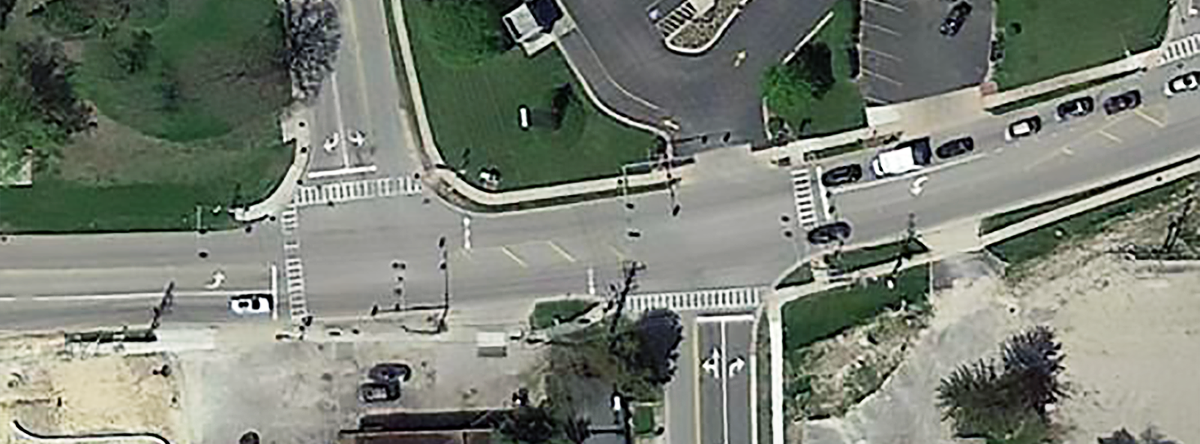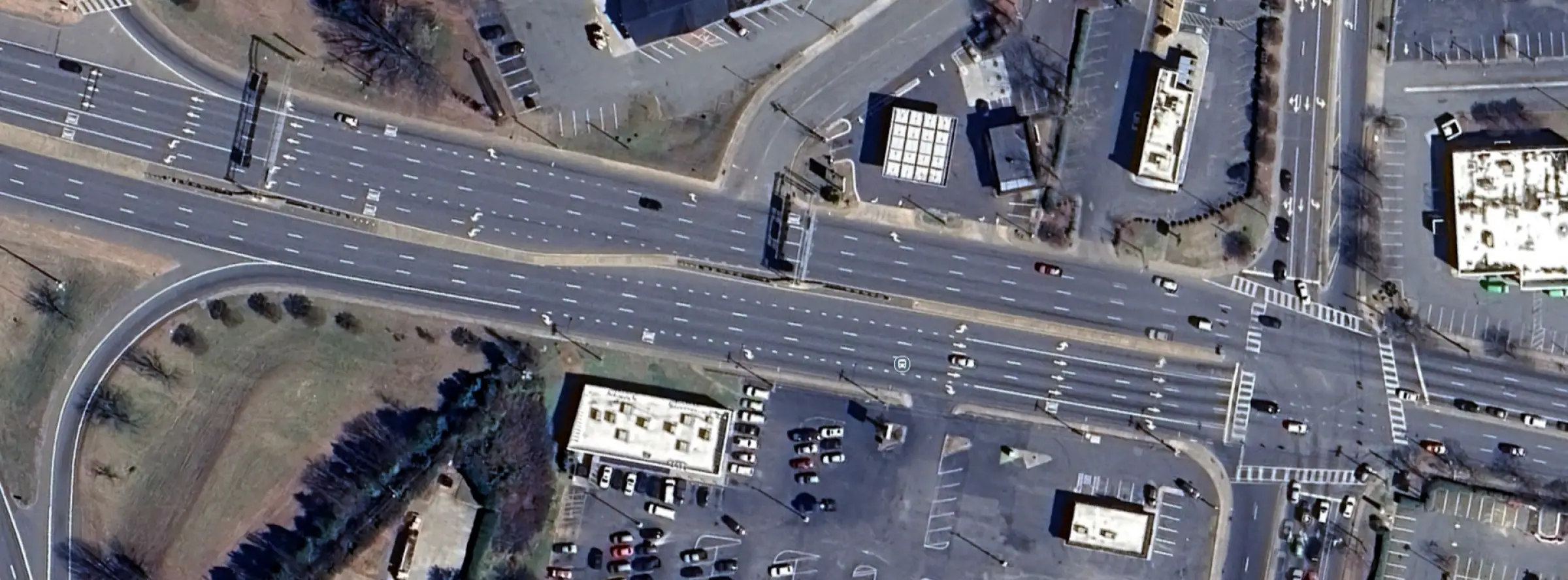This case study shows an intersection with offset approaches. The traffic signal operates on one controller, providing a split-phase scheme that prevents the minor street movements from being served simultaneously. The Highway Capacity Manual (HCM) does not have a methodology for addressing the specifics of two signals with one controller. The approach described below was suggested to model this configuration on the Highway Capacity Software (HCS) Streets Model.
I. Streets file with two intersections
- In the Geometry section, the lane configuration was set to represent a corridor with two alternate T-intersections and one short segment between the two.
- The corridor control was configured as coordinated. The cycle length must be equal for both intersections.
II. Timing and Coordination

With the support of the space-time diagram tool, the timing for each intersection and an offset between them were manually calculated so that the red light is given to each intersection’s main direction at different times, alternating between the two. Some all-red time is also programmed to provide a clearance period for traffic between the intersections. This configuration will emulate a split-phase scheme.
III. Microsimulation with TSIS-CORSIM

HCS Streets Interface and Time-Space Diagram for the proposed solution Microsimulation in TSIS-CORSIM
To confirm that the solution was working as intended, the HCS file was exported and simulated in TSIS-CORSIM. The simulation animations helped assess the split-phase scheme, ensuring each minor street approach is given green times sequentially, and flows don’t conflict at any point.




